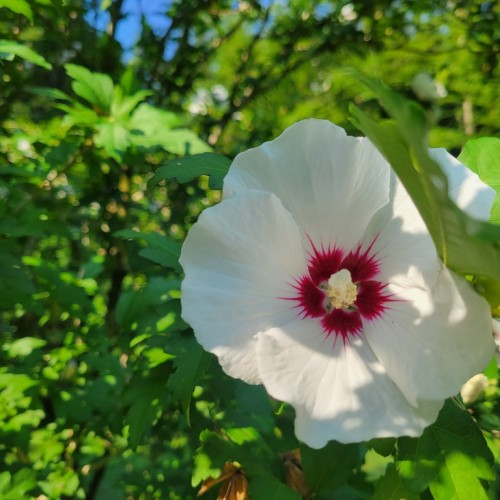
rose of Sharon
Hibiscus syriacus 'Minsygrbl1' FIRST EDITIONS HAWAII
Cycle:
Perennial
Watering:
Average
Hardiness Zone:
5 - 8
Flowers:
Flowers
Sun:
full sun
Leaf:
Yes
Growth Rate:
Low
Maintenance:
Low
Drought Tolerant:
Yes
Salt Tolerant:
Yes
Tropical:
Yes
Care Level:
Medium
watering
Rose of Sharon requires regular watering in order to thrive. It should be watered deeply and thoroughly once per week in summer during its active growing period, but the frequency can be decreased to every two to three weeks during more extreme temperatures, when not much growth occurs. In milder climates, Rose of Sharon may require more frequent watering. During the fall and winter, the plant should be watered only when the soil begins to feel dry. Avoid overwatering, as too much water can cause root rot.
sunlight
The Rose of Sharon plant is considered an easy-to-grow flowering shrub, and it prefers plenty of sunlight. During the growing season, it is best to give the Rose of Sharon 6 to 8 hours of full sun each day, including early morning and/or late afternoon sun as well. During the winter months when the plant is not actively growing, it needs about 4 to 6 hours of sunlight each day. A south- or west-facing window is ideal for growing this plant indoors.
pruning
Rose of Sharon should typically be pruned during the early spring before it begins to bud. The exact timing of pruning will depend on the plant’s growth habit, as well as the climate of the area in which it is grown. Generally, however, pruning should be done in late March or early April. In climates with mild winters, pruning can be done earlier. As a general rule, the amount of pruning needed is typically considered to be very minimal. Generally, only dead, broken, or diseased wood should be removed during pruning, and all stems should be individually assessed. If a rose of Sharon is overgrown or badly in need of rejuvenation, it may be possible to prune out a third of the oldest branches in early spring. Pruning half of the oldest branches of a severely overgrown plant can occurs in late winter or early spring followed by the remaining half a year later.
